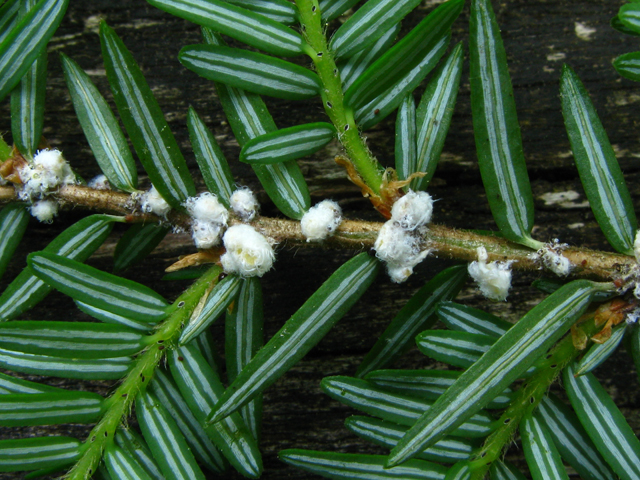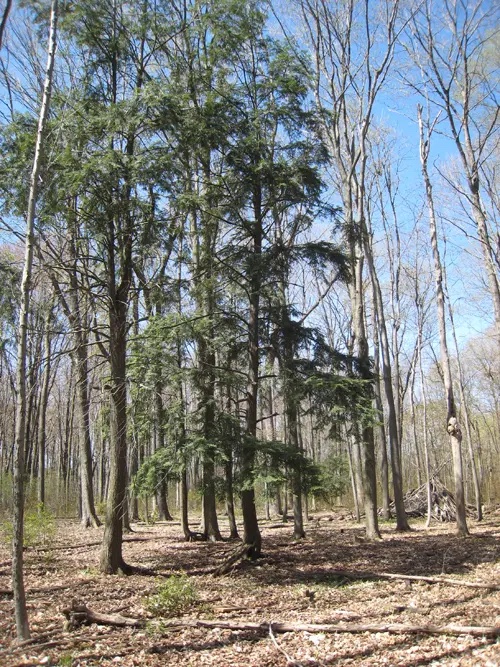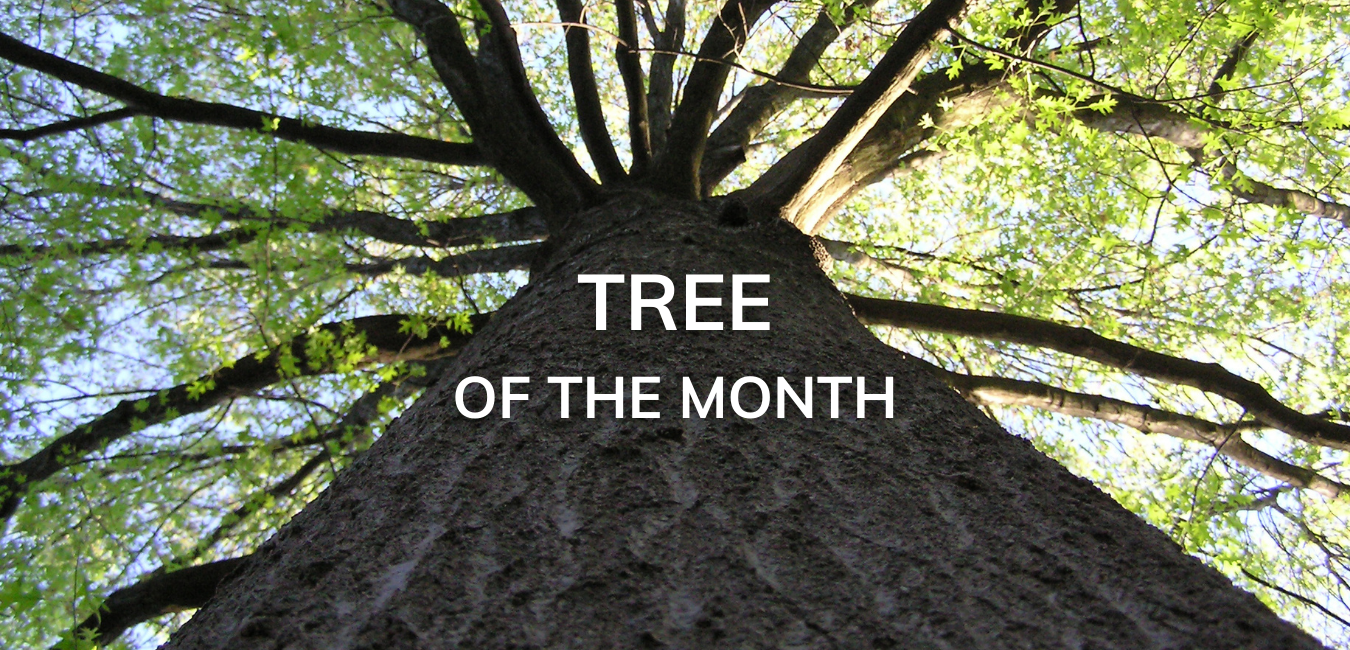
Photo by Alan Cressler 
Photo by Brian Lacey
Scientific Name: Tsuga canadensis
The eastern hemlock is native to Eastern Canada and is a prominent tree in the Maritime provinces. In Ontario, the eastern hemlock is prevalent in the south, rarely extending into the northern parts of the province. Hemlocks require a lot of moisture to be successful and they grow in many different soil types. They are also very shade tolerant and grow best out of direct sunlight. Hemlocks do grow in pure stands; however, it is more common to find them with a mixture of other tree species. One tree in particular, the yellow birch, is commonly found growing with hemlocks. Other species include eastern white pine, red spruce, white spruce, sugar maple and beech.
Eastern hemlocks grow quite large at 30 m tall and 100 cm in diameter. The shape of an eastern hemlock is conical– with a wide base that tapers into a thin top. As it ages, the shape of a hemlock becomes more irregular. Branches grow straight out from the trunk but are quite skinny and flexible, which results in drooping ends. Its needles are 1-2 cm long and are shiny green on top and a paler colour underneath. There are 2 white strips on the underside of its needles (a distinguishing feature of this tree). As well, each needle is attached to the branch by a small stem. Eastern hemlocks are conifers, meaning they don’t lose their needles in the winter. Hemlocks have small, oval-shaped cones that are only 1-2cm long.
Eastern hemlocks are quite similar in look to balsam firs, another common Southern Ontario conifer. To distinguish the two, you can look at the needles. Eastern hemlock needles are attached to the branch with a small stem unlike balsam firs. An easy way to remember is the phrase “hemlock, stem-lock”.
Eastern hemlocks are also a great wildlife tree! The conical shape and heavy foliage provide dense habitat for wildlife and good cover from the elements. Animals you will often find using a hemlock for cover include rabbits, wild turkeys and deer. Furthermore, the seeds provide food for many bird species.
Fun Facts
- Eastern hemlocks can live for up to 600 years!
- The needles were often used to make tea. To do so, heat the water until it boils, remove it from the heat, and add the needles to get a nice, strong tea.
References
https://www.ontario.ca/page/eastern-hemlock
http://www.lrconline.com/Extension_Notes_English/pdf/hmlck.pdf
https://www.uoguelph.ca/arboretum/thingstosee/trees/easternhemlock
Image Sources
Cressler, Alan. Wildflower Center Digital Library. “Tsuga canadensis”
Lacey, Brian. University of Guelph, Aboretum. “Eastern Hemlock”


